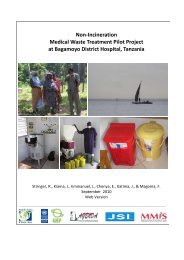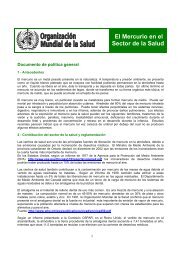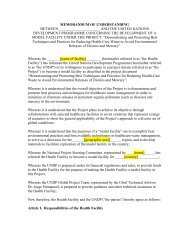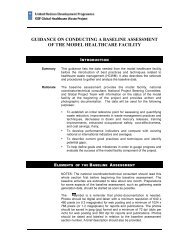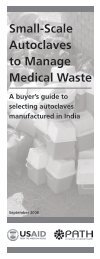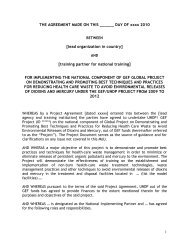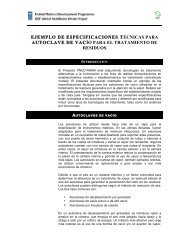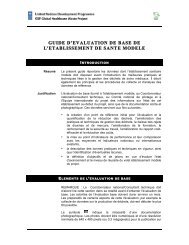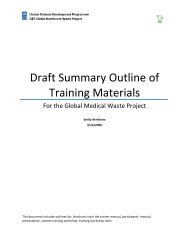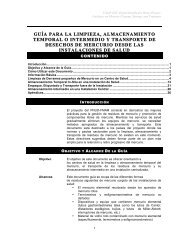Latvia
Latvia
Latvia
You also want an ePaper? Increase the reach of your titles
YUMPU automatically turns print PDFs into web optimized ePapers that Google loves.
Health systems in transition<br />
<strong>Latvia</strong><br />
Table 1.6 Levels of immunization (%), 2005<br />
Measles (16–23 months) 95.0<br />
Polio (2 years old) 95.6<br />
Rubella (16–23 months) 95.0<br />
Hepatitis B (1 year old) 98.1<br />
Neonatal tetanus (2 years old) 95.6<br />
Diphtheria (2 years old) 95.6<br />
Whooping cough (2 years old) 95.0<br />
Mumps (16–23 months) 98.7<br />
Source: HSMTSA 2007b.<br />
Welfare adopted the State Immunization Programme 2001–2005, one of the tasks<br />
of which was to reach immunization levels recommended by WHO, involving<br />
at least 95% of the total child population. The State Immunization Programme<br />
contains a Vaccination Calendar defining children’s’ vaccination schedule.<br />
Although not all children are vaccinated in accordance with this schedule, the<br />
immunization levels recommended by WHO have been reached.<br />
A key problem concerns the high level of morbidity among adults due to<br />
diphtheria, caused by shortages of vaccination supplies. Morbidity due to other<br />
vaccination-dependent diseases is extremely low.<br />
In 2002 and 2003 the Public Health Agency carried out a survey on obstacles<br />
to immunization of children of 1, 2 and 8 years of age. The immunization rate<br />
of children aged 8 years is considered adequate: 94.8% of children have been<br />
vaccinated against diphtheria, tetanus and polio; 96.5% of children against<br />
measles; 96.3% against mumps; and 89.3% against rubella.<br />
The most significant obstacles to vaccination revealed by the survey are<br />
socioeconomic factors: children from disadvantaged families have lower<br />
immunization rates. Other factors of lesser importance include change of place<br />
of residence, change of family doctor, irregular vaccination in schools, lack<br />
of notification about vaccination, as well as medical reasons (allergic rhinitis,<br />
dermatitis and bronchial asthma).<br />
The survey also reveals problems related to vaccinating institutions that<br />
obstruct immunization. For example, only 13.5% of the total surveyed medical<br />
institutions provide vaccinations for eight hours a day; only 9.2% of institutions<br />
remain open after 19:00, thus limiting access for working parents.<br />
Figure 1.2, showing <strong>Latvia</strong>’s position with respect to levels of child<br />
immunization for measles in comparison with EU countries, indicates that in<br />
2005 <strong>Latvia</strong> achieved 95% of immunization coverage (WHO Regional Office<br />
for Europe 2007a). This is higher than many other countries of the region and<br />
20





